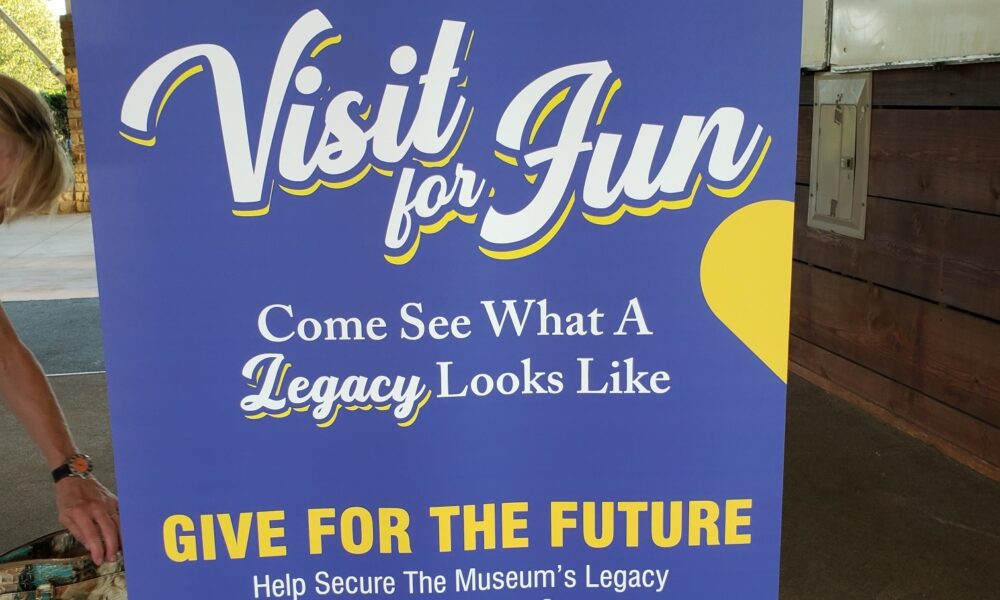An interview with Kasey Porr

Kasey Porr
Curator and Collections Specialist Mabee Regional Heritage CenterIn January 2023, just weeks before the grand opening of the Flying Queens Museum, Kasey Porr stepped into her role as Curator and Collections Specialist at the Mabee Regional Heritage Center. Since then, she’s played a key role in preserving and presenting the powerful legacy of one of the most influential programs in women’s sports. The Hutcherson Flying Queens Foundation sat down with Kasey to learn more about her role, the work happening behind the scenes, and what’s ahead for the museum.
HFQF: You were hired just before the Flying Queens Museum opened. Did you know what you were getting into?
PORR: For me, it was a little bit different because I came in after a good portion of the artifacts had already been donated and many exhibits were being installed—so I had kind of an idea. Of course, it’s a basketball museum, so you’re thinking: uniforms, trophies, basketballs, things like that.
But I’ve been amazed by the wide variety of artifacts donated from across the decades of the Flying Queens program. Each item tells its own story. Among the standout pieces are wallets printed with team photos, clever AAU pens that flip to reveal championship dates, promotional frisbees and mini basketballs tossed into the crowd, vintage fabric and metal pennants, and even a commemorative blanket from the 1990s.
Also, I serve as curator for the entire Mabee Regional Heritage Center, which means I’m responsible for all three museums and their collections. My job is to care for the collections, make sure everything is cataloged, housed properly, and preserved—which is always an ongoing process.
[Editor’s Note: The three museums are the Jimmy Dean Museum, the Museum of the Llano Estacado, and the Flying Queens Museum.]
HFQF: What are you working on right now?
PORR: Right now, we’re working on building a fully functioning archive. This will include everything from photographs and booklets to scorebooks and paper documents, along with digital collections.
We’ve had a lot of people reach out—especially for photos—or researchers trying to learn more about the Queens. We also get requests when Flying Queens are being honored or receiving awards. My hope is that as we continue to grow the collection, we’ll have an archive that can handle every one of those requests even more efficiently.
HFQF: Is there anything we might look forward to coming up?
PORR: Yes! We’re getting ready to update part of the exhibit in October during the weekend of the Flying Queens Golf Tournament. We’ll be rotating in some new pieces, including travel uniforms and game uniforms—some of which have never been on display before. I’m really excited about those.
We’re also looking at displaying more scrapbooks. Not many people think about scrapbooks when they think of museums, but they were meaningful to the women who played—and that makes them meaningful to us. I have a couple in mind that I’m keeping as a surprise because I think visitors will really enjoy them.
HFQF: What would the Mabee staff like to see happen with the Flying Queens Museum in the future?
PORR: One of our ongoing goals is to continue collecting uniforms. Every time the team updates their look, we hope to get a uniform from that era to keep the collection current. We also want to build a digital photo archive of current teams so we’re prepared for future requests and historical preservation.
Another project we’ve been brainstorming is something called a “traveling trunk.” These go by a few names, but the idea is to create a mobile exhibit targeted toward schools. It would cover the Flying Queens’ history as a whole or highlight specific themes.
Not all schools have the budget to bring students here, so this is a way for us to go to them. Of course, this kind of project takes time and funding—just like any exhibit, it needs to be carefully built and managed. But it’s something we’re very interested in developing.
HFQF: Aside from the museum artifacts, what has surprised you the most?
PORR: One thing that really struck me was how quickly women took to basketball—and how early the Flying Queens began dominating. Women’s basketball began in 1892, less than a year after the sport was invented. And not even 50 years later, the Flying Queens were taking the court against international teams like Mexico. Soon after that, the Flying Queens who made USA All-Star teams and played in the Pan American Games were having a widespread influence. It’s just inspiring.
Something else I didn’t expect was how much of a family the Flying Queens have been—not just within each individual team, but across generations. As more women have joined the program over the years, they’ve been welcomed as part of a larger family. We even have mothers and daughters who both played for the Queens. That legacy runs deep.
And one of my favorite things about this job is when people come in and say, ‘My mom was a Flying Queen,’ or ‘My grandmother told me stories.’ Then they walk through the museum and realize just how big of a deal it was. That moment—when the stories they grew up hearing are confirmed and celebrated—is incredibly special.
And I know there are still more of those stories out there waiting to be discovered!

